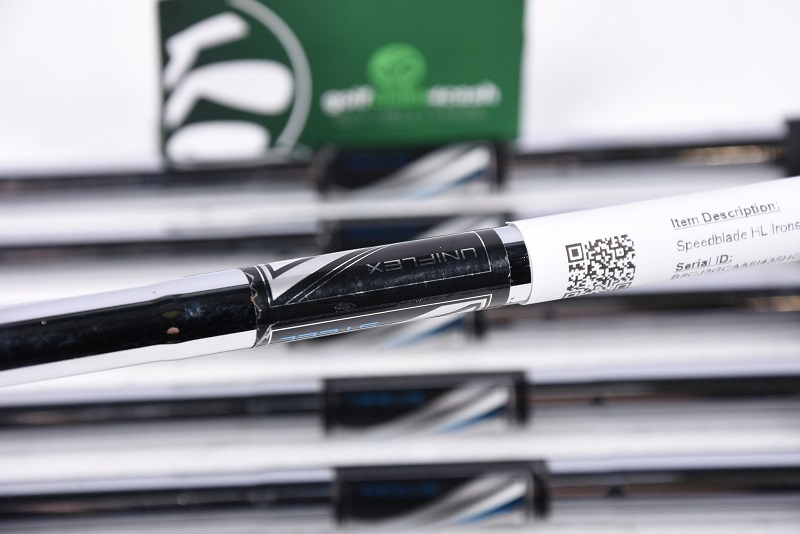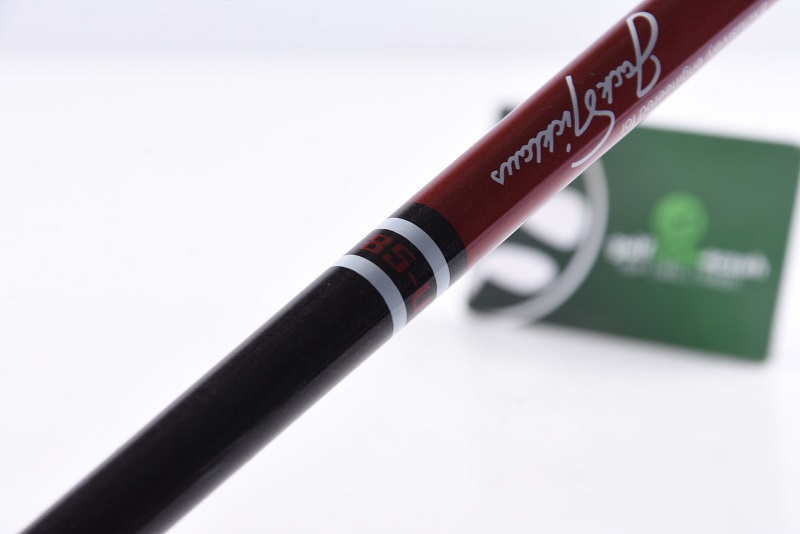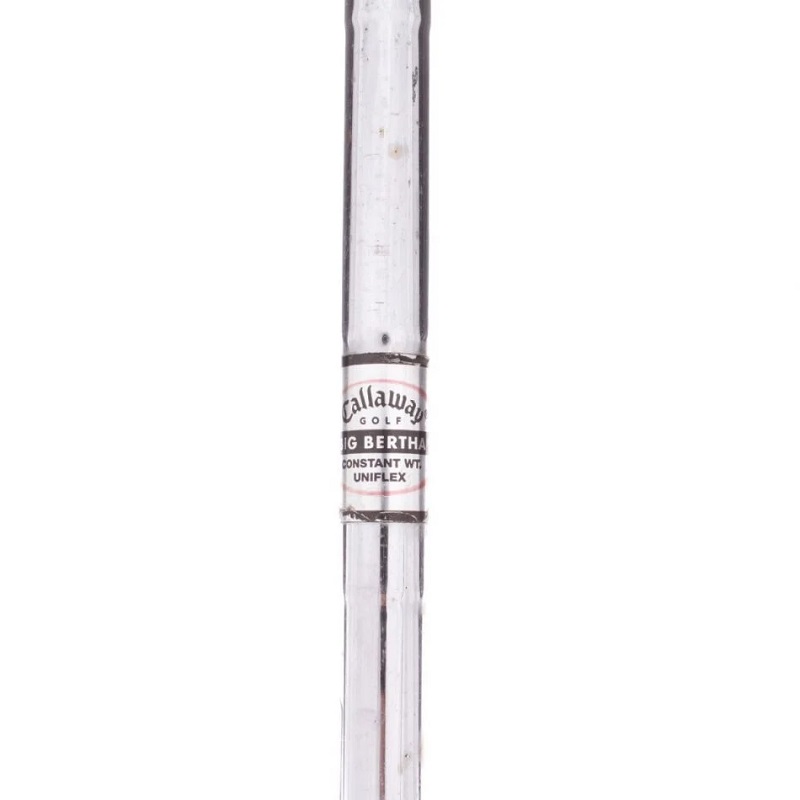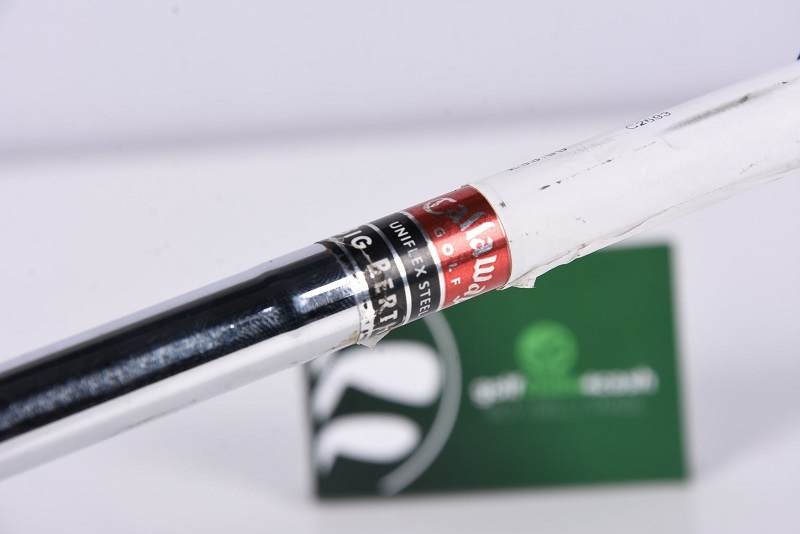Are you someone who needs to get a new golf club but needs clarification about what type of shaft to choose? You have heard the term Uniflex but need to understand how it fits into the equation – and what differentiates it from other shaft types. Look no further; this blog post will explain what a uniflex shaft is in great detail.
We’ll also compare various shafts on the market so that you can be sure which one would be best for your specific swing speed and style of play. Whether you’re starting or looking to upgrade your current golf clubs, this comprehensive guide will help ensure that investing in a good quality set with flex requirements matching your game pays off!
What Is An Uniflex Shaft?

Right now, to start, we explain What an Uniflex Shaft is.
A Uniflex shaft is a type of golf club shaft specifically designed and engineered to provide consistent performance for players. It’s typically suitable for beginners because their ability to control the swing is insufficient.
It can be assumed that Uniflex Shaft is a combination of Regular and Stiff Shafts because Uniflex is stiffer than the Regular and more flexible than the Stiff. This provides golfers between Regular and Stiff with the best suitable golf club to utilize their performance.
To explore deeper, what really makes Uniflex differ from other shafts? Keep rolling to the next part!
How Does Uniflex Shaft Impact Your Performance?
Swing
The Uniflex shaft can help to improve your golf swing by providing a consistent level of flex throughout the entire swing. This helps to increase club head speed while minimizing energy loss in the transition from backswing to downswing.
Additionally, it helps you maintain control over the club so that you can achieve more consistent results with each shot.
Accuracy
The geometry and design of the Uniflex shaft also contribute to enhanced accuracy due to its reduced torque and increased launch angle.
Its overall lightweight construction allows for an easier tempo throughout your swings, helping you develop a rhythm that will result in more accurate shots.
With improved balance and control, you are able to focus on precision while achieving greater consistency with each drive or putt.
Distance
The Uniflex shaft can help you achieve greater distances with each shot due to its improved energy transfer from the club head to the ball.
Its design helps you get more power out of your swings, resulting in increased ball speed and carry, ultimately enabling you to hit the ball farther than ever before.
Additionally, its low torque profile allows for higher launch angles so that you can maximize your distance off the tee or green.
Pros and Cons of Uniflex
Pros
- Popular for the majority of the golfer population
- Uniflex shafts can provide consistent performance that is not affected by the golfer’s swing.
- Become the perfect choice for golfers who are hesitant between the regular and stiff shaft.
- It is suitable for players who have difficulty controlling their swing because of its design which gives them more control over their shots.
- Uniflex shafts are highly durable, which makes them a great investment in the long run.
Cons:
- Not widely made by graphite material
- Not suitable for too slow swing speeds
Uniflex Shaft – Steel or Graphite?

When it comes to shafts, most people think of steel when they hear the word “Uniflex.” This is because steel has been the go-to material for many years and is still popular today.
Steel Uniflex shafts are more durable than graphite and typically provide a better feel and control. They can also be produced with a variety of flexes and weights, giving you more options to choose from.
Graphite Uniflex shafts are also becoming increasingly popular due to their lightweight construction and increased energy transfer. Graphite is also less expensive than steel, making it a great option for beginners or players on a budget.
The downside of graphite Uniflex shafts is that they may not be as durable as steel and are not suitable for golfers with slow swing speeds.
Who Should Choose The Uniflex Shaft?
For novice golfers, selecting the ideal shaft is crucial to upping their game. And that’s where the Uniflex Shaft steps up to the tee. Not only does this shaft provide top-notch performance and feel, but its consistency in shots is unmatched.
What sets it apart? It gets more stable as your swing speed increases! Perfect for those times beginners hit shots inconsistently. The Uniflex Shaft helps you easily adjust your hit and control the club.
In case you’re debating between a regular or stiff club, there’s no need to freak out—Uniflex is the ultimate combination that caters to all your golfing needs. With the ideal amount of stiffness and flexibility, Uniflex Shaft promises you the best performance on the green.
What Makes Uniflex Shafts Differ From Other Shafts?

Weight
Uniflex shafts are designed to be lightweight and durable. This means they can give you more speed without sacrificing control or accuracy. This is especially beneficial for golfers who want a responsive feel when swinging the club.
Kick Point
Before exploring the difference in Kick Point of Uniflex Shafts, in case you haven’t heard of Kick Point, it’s better for you to know what Kick Point is.
Kick Point, or kick point flex, is an important feature to consider when choosing a golf shaft. It refers to the location on the shaft at which the most flexibility occurs during your swing.
The higher the kick point, the more flexible the shaft, meaning it will store and release more energy for a greater distance.
On the other hand, lower kick points create less energy storage and release, making them better suited for players with slower swing speeds.
When it comes to Uniflex Shafts, these shafts are typically designed with a lower kick point than other types of shafts. This allows the club head to remain in place during your swing and helps you achieve more control over your shots.
Torque
Torque is the amount of twist a golf shaft experiences when it is flexed during a swing.
Higher torque means more twists and can result in a loss of control, while lower torque provides you with better accuracy and feel.
Torque is determined by several factors, such as club length, shaft flex, and head weight. By optimizing these elements, a golfer can increase their swing power and distance.
Uniflex shafts are renowned for providing consistent performance, allowing golfers to use them without worrying about having to adjust each club’s specifications for optimal performance.
Steel Uniflex Shafts are designed to have low torque thanks to their material. That’s why they improved control over your shots. This makes them especially useful for players with slower swing speeds who need more control.
The Best Uniflex Golf Shafts 2023
Callaway Uniflex Golf Shaft
Callaway Uniflex Golf Shaft is designed to give you the flexibility and control you need to make powerful shots. The shaft features a unique, flexible design that absorbs vibrations and helps reduce torque for improved accuracy.
It also has an extra-long tip section which increases the launch angle, spin rate and distance. It’s available in multiple flexes and lengths, allowing you to customize your game to fit your style of play.

Wilson Uniflex Golf Shaft
Constructed using lightweight, low-torque graphite, these shafts help golfers maintain a consistently high ball speed throughout their swings.
The Uniflex design also features an improved flex profile which helps promote a higher launch angle and increased spin control for more consistent shots.
Wilson Uniflex shaft is suitable for beginners with a lightweight and support to push more distance into your golf ball travel.
Tour Edge Uniflex Shaft
The Tour Edge Uniflex shaft is designed with a stiffer midsection to make sure your club head speed increases throughout the swing and reduces energy loss.
It also has an extra-long tip section for improved launch angle and spin rate, resulting in more accurate shots.
This shaft also features a lower torque profile which helps you achieve better control over your shots. The lightweight construction makes it easy to swing, and the added flex helps you maximize your distance.
Other Kinds of Golf Shafts
In comparison to the Uniflex shaft, several other types of golf shafts offer similar features and benefits. Depending on the swing speed, manufacturers constantly develop and invent many golf shafts to satisfy all the golfer’s needs. These include:
- Ladies (L)
- Senior (A/M)
- Regular (R)
- Stiff/Firm (S)
- Extra Stiff (XXS/ XS)
How To Choose Your Suitable Shaft?
There are many factors that impact your choice of Golf Shaft. However, the two main factors that decide which shaft will match your need are Speed Swing and Ball Distance.
TaylorMade Golf recommends a table that describes the features of which shaft will fit to which speed swing and which distance.
| Shaft Golf Club |
Abbreviation |
Swing Speed | Distance |
| Ladies | L | Under 75 mph | Under 180 yards |
| Senior | A/M | 75 to 85 mph | 180 to 200 yards |
| Regular | R | 85 to 95 mph | 200 to 240 yards |
| Stiff | S | 95 to 110 mph | 240 to 275 yards |
| Extra Stiff | XS | Over 110 mph | Over 275 yards |
FAQs
What Is The Difference Between Uniflex And Regular Shafts?
Uniflex shafts are designed to be lightweight and durable. They have a low kick point, suitable for golfers who have a 90 mph swing speed. The regular shafts are stiffer than Uniflex and are a popular choice for golfers who swing between 75 and 9 mph. Additionally, Uniflex has a lower torque rating, which helps golfers maintain consistent ball speed throughout their swings with less energy loss.
What Does A Too-Flexible Shaft Do?
A too-flexible shaft can cause a golfer to lose control of their shots. The ball will tend to go further but with less accuracy and predictability. It’s important that golfers find the right balance between stiffness and flexibility in order for them to achieve consistent results.
What Happens If The Shaft Flex Is Too Stiff?
If the shaft flex is too stiff, the golfer will tend to hit the ball shorter and with less control. This can be caused by not having enough power or speed in your swing, as well as using a club that is not suitable for your swing. It’s important to find the right fit for your swing in order to maximize distance and accuracy.
What Is Uniflex Shaft Weight?
Uniflex Shafts generally range from 110 to 115 grams. The lighter weight of the shaft helps improve swing speed, as well as reducing club head twisting during the swing and provides more control over your shots.
Conclusion
Uniflex shafts are lightweight and designed for golfers who need a little extra help in terms of control. They feature a low kick point which helps reduce torque, allowing you to achieve more consistent shots with greater accuracy and distance. When choosing the right shaft for your needs, it’s important to take into consideration all aspects, such as swing speed, ball distance, and the manufacturer’s recommendations. With the right shaft, you can improve your game and take it to the next level. By understanding the differences between uniflex and other types of shafts, as well as their advantages, golfers can make an informed decision on which type is best suited for them.


